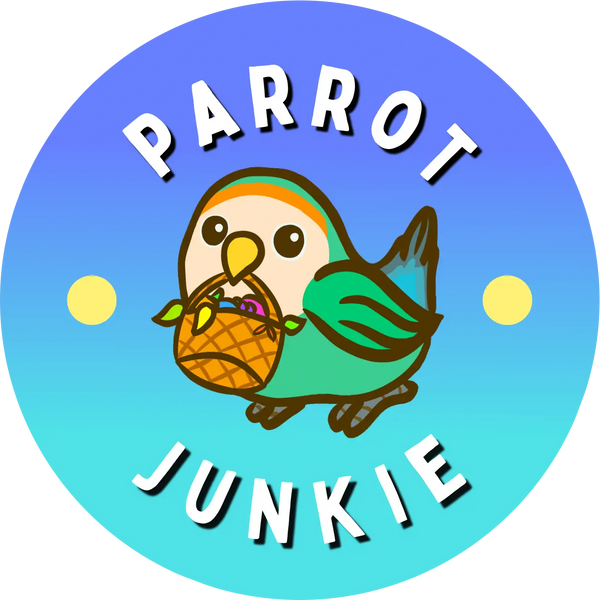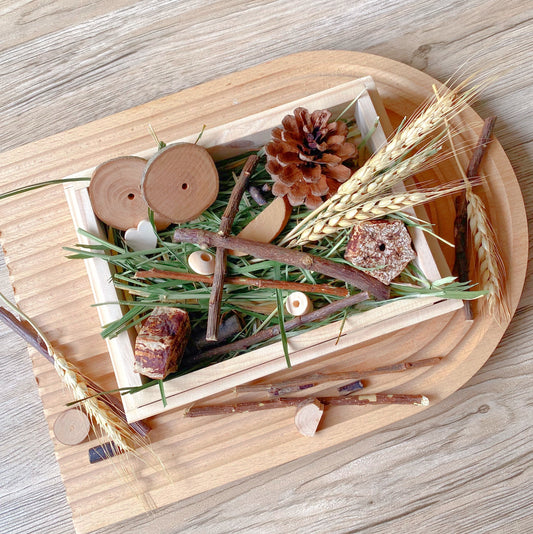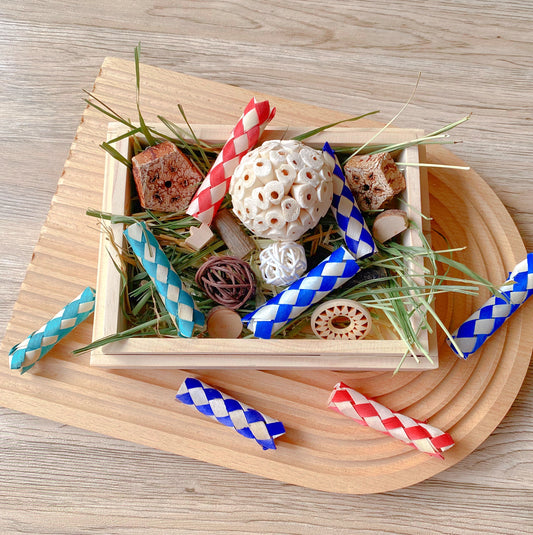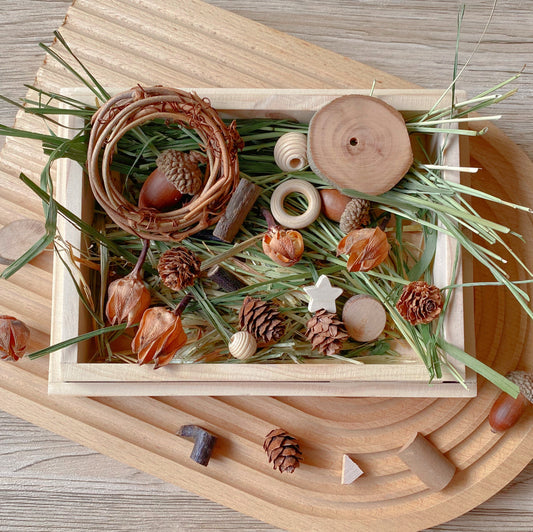Thinking about getting a parrot for your home? Well, that’s wonderful, because it also talks!
If you’re interested in getting a bird that can speak, a parrot is a great option. This is because not all bird species have the ability to vocalize. Amongst birds that talk, parrots do have an incredibly amazing vocalizing ability.
So, if a parrot is your preferred pet and you wish to train it to speak, this guide is for you. This article is all about talking parrots; how and why they talk, how to train them to speak, and much more!
How do parrots talk?
First and foremost, let’s address the question: how do parrots talk. Amongst the plethora of species on the earth, birds and human beings are the only two that can produce human language. As mentioned earlier, parrots are possibly the best at talking. There is a lot of evidence of the superior ability of parrots speaking a multitude of different languages!
Although human beings can talk because they possess vocal cords (also known as the vocal fold) on the larynx, it is not the same case for parrots. Our vocal cords are located on the side of the larynx which is then covered by a special type of muscle that possesses the ability to vibrate and the sound produced is then modulated by the larynx.
However, parrots do not possess vocal cords! So, how do parrots talk? The anatomy is entirely different for parrots. After all, they do not have lips or teeth along with no vocal fold.
For birds that talk, particularly parrots, this anatomy is complicated. They have a vocal tract that begins with the syrinx. It’s not just parrots that possess the syrinx. Songbirds and crows have the syrinx as a part of their vocal tract too.

The syrinx is located at the juncture where the trachea divides into the lungs. The syrinx, in place of the larynx, for parrots, is responsible for producing sounds. When air flows through the trachea and the syrinx, it vibrates on the walls of the syrinx. The vibrations created on the walls are modulated by the vocal tract as a whole to produce sounds. For other birds that talk, such as crows and songbirds, it is the same explanation.
Isn’t it surprising that parrots can speak without a larynx? It is equally fascinating that although they do not have teeth or lips, they can produce sounds of the same timbre as human beings. As human beings, the role played by teeth and lips is of utmost importance when it comes to the ability to vocalize and enunciate our words. But this isn’t the case for parrots. The vocal tract does it all.
Why do parrots talk?
Another pertinent question for birds that talk is that why they speak. The main reason why parrots talk is that they are vocal learners. This means that parrots can grasp different sounds by hearing them. After they’ve heard a sound, they can then imitate that sound. So, parrots are good at mimicking different sounds that they hear.
An extensive study on why parrots talk was conducted to further understand the neuroscientific basis of why do parrots speak. According to this study conducted at Duke University, any bird that is a vocal learner has a specific area of the brain that is called the ‘song system’. The ‘song system’ is the part of the brain that is devoted to this vocal learning ability possessed by birds.
According to this study, the song system of parrots is even more specialized in comparison to other bird species. The song system part of a parrot’s brain is composed of two layers, namely, the ‘core’ (the inner layer) and the ‘shell’ (the outer layer). The division of the song system into the core and shell is unique to parrots. According to this study, it is proposed that the shell of the song system is what makes parrots such experts at mimicking.
Which was the first-ever talking parrot?
The vocalizing ability of parrots has been extensively recorded in history. There are so many incredible records of parrots speaking. Even if you browse social media today, there are many accounts of pet parrots vocalizing very well.
The first-ever record of a parrot’s ability to speak was reported in the fifth century BC, in Greece. This event was witnessed and recorded by a Greek historian named Ctesias of Cnidus. Ctesias wrote about a bird who could talk.
This bird was named Bittacus. The manner in which this talking bird Bittacus was described was inferred by many scholars to fit the description of a parakeet. According to Bittacus’s report, Bittacus was called a Plum-headed bird. The talking bird that was described by Bittacus perfectly resembles a particular species of parrot called the plum-headed parakeet. So, this account was considered to be accurate and reliable.
Are parrots capable of understanding what they say?
Some of you may be wondering: are parrots simply mimicking human speech, or they really understand what we are saying? In other words, can one hold a conversation with a parrot or will they simply copy what they hear?
Well, research has shown that birds that talk, especially parrots, may have some simple associations to what they speak. However, it is not known for sure whether parrots hold complex meanings or associations about what they say.
But the unique thing about parrots is that they’re very perceptive of the context in which they speak. To put it simply, when you hear people speak, they understand the context in which that phrase is to be spoken. For instance, a pet parrot may know when to say “hello, how’re you doing?” if you always say this to them upon your first meeting with them in the day. Or, a parrot may pick up that the owner often says “Peekaboo” when he or she hides behind the door and appears suddenly, so they are cued to say it whenever this occurs.
Another important point to note about birds that talk is that they’re very drawn to phrases that convey commotion and excitement. A very famous and beautiful parrot, Pebbles the cockatoo, is known for her “fowl language” (warning: might not be suitable for kids)! This was not taught by her current owner (who is a very loving and caring man), but was picked up in her previous homes.
In other accounts of talking parrots, they often pick up swear words and loud exclamation words because they can sense the tension and excitement in those words when humans utter them. Hence, you should always be careful what you say around your bird, or it might accidentally pick up something that you don’t want them saying to your visitors!
What are 5 types of parrots that talk?
There are several types of parrots that talk, some more known to talk than others. This section focuses on five types of parrots that talk.

Amazon parrots
This group of parrot species is probably one of the most popular domesticated species among medium-sized parrots. They’re a household favorite because they’re easily available and possess incredibly impressive vocalizing ability. Although they aren’t very noisy, they can be quite loud when they choose to use their parrot voice.
They are possibly the most talkative of the parrot species. Not only do they talk a lot, but the clarity of their speech is also very impressive. They also can efficiently contextualize human speech. They’re great at mimicking human speech and will not forget what they learn easily. Some are even known to imitate operatic singing very well!

African Grey parrots
Although earlier on these birds weren’t that popular as household pets, extensive research proving their high intelligence quotient has led to a hike in the popularity of this species as household pets.
The African Grey Parrot can develop an impressively extensive vocabulary owing to its high intelligence quotient. Unlike other parrots, the African greys can learn words and phrases very fast. They’ll only need to hear a word or phrase once or twice or mimic the same. Not only that, but they also have the potential to understand the meaning of different concepts and what they speak, if trained appropriately.
Another reason that they’re a household favorite is that they prefer talking rather than screaming. However, the greys can be noisy at times. This happens if they’re exposed to different household sounds such as the sound of a doorbell or the microwave oven, and so on. One famous talking African Grey parrot is Einstein the Talking Parrot.

Indian ringneck parakeets
Originating in Asia, amongst the different birds that talk, this is another favorite. Not only do these parrots look very attractive, but they were also even considered to be divine creatures in the past. This species is another good talker. They are renowned for learning up to 250 words which pave the way for an impressive vocabulary, although depending on training, they might just repeat only a few words that they like!
The Indian Ringneck is a great choice for people who wish to have a talkative pet in the house. Although this species is quite the talker, there will be certain Indian Ringnecks that do not learn to speak. Here’s a video of some ringnecks talking. Their voices are very funny!

Quaker (monk) parakeets
These small birds pack a punch and love to vocalize! They can get pretty loud for their small sizes.
Quaker parakeets are really good talkers and owners of these parrots often manage to teach them to say many words. Another good quality about these birds is that if you hand-raise them, they can grow up to be highly affectionate and tame. In this video a quaker parakeet can be heard saying quite a few words pretty clearly.

Eclectus parrots
Eclectus parrots are another great option for keeping at your home as a pet. This is one of few species of birds that talk that have a shorter lifespan of about 30 years. So, these birds will probably not outlive their owners.
So, why are Eclectus parrots a good species for keeping as a pet? It’s because they’re relatively quiet. This does not mean that they aren’t good talkers. It just means that they’re not as loud and noisy as some other species of birds that talk.
Coming to their vocalizing ability, Eclectus parrots are very fast learners, just like the African greys. Apart from that, they have a unique honk that they vocalize when stressed, as well as other sounds which are very fascinating to hear!
Are male parrots better talkers than female parrots?
This is true to an extent. Research has shown that in some species of parrots, the male birds have a larger vocabulary and better vocalizing ability in comparison to their female counterpart. This is true for budgies and cockatiels. However, there are several exceptions to this finding. For instance, it’s not that female budgies or cockatiels cannot speak at all. It’s just that they take more time and rigorous training to hone this ability.
There may be certain reasons to explain why male parrots are faster learners and have a better vocabulary than female parrots. In the wild, between female and male parrots, the latter is more vocal.
Another important thing to remember is that this finding is not applicable for several parrot species such as the Amazon parrots, African greys, and macaws. For these species, the sex of the parrot does not seem to impact the speaking or mimicking ability of the bird.
How do you teach a bird to talk?
I usually don’t encourage people to get a parrot primarily for their ability to talk. It can be a hit or miss as even among talkative species, not all individuals might talk. First, you need to get a parrot because you want a parrot, regardless of its talking ability. Then, if the parrot you have gotten is able to talk, it would be a very pleasant bonus of course!
Now that you have a comprehensive idea about the vocalizing ability of parrots, let’s address how to teach a parrot to talk.
- Do your research about your pet bird
There are some parrots that either choose not to vocalize (for unknown reasons) or don’t have this ability. So, if you want to teach your parrot to speak, do some research about the bird species. Getting a species that is known for talking would give you a higher chance of getting a talking bird. Certain species such as lovebirds are not well known to talk, even though they might be able to mimic other sounds instead of words.
However, again, bear in mind that talking should not be your main aim of getting a parrot.
- Choose what you want your parrot to say
Different parrots have different learning abilities. This means that some parrot species such as the African Grey Parrot, Eclectus Parrot, and Amazon parrots are very fast learners. They’ll just need to hear a word or phrase one to three times to pick it up. So, it’s important to be a bit cautious about the things you say near such species because they might start saying something that you don’t want them to say. So, be very careful about what you say when it comes to how to get a parrot or parakeet to talk.
Another important takeaway in the process of how to teach a parakeet to talk is that you should always start the process with short phrases and words like “hello”, “night-night”, or “bye-bye”. As already mentioned, parrots are more receptive towords that convey excitement or commotion. So, when you’re teaching your parrot to speak, say these phrases and words with enthusiasm.
- Repeat the phrases or words frequently
As you start teaching your parrot how to speak, you may start noticing that there are certain words or phrases that they learn to mimic faster than others. These words or phrases may be the ones that you said with more enthusiasm and excitement. So, when your bird starts mimicking the words that he or she has paid more attention to, use that word as a training word.
It is very important to keep repeating the phrases and words to your bird. Repetition is the best way for teaching your parakeet to speak. Repetition of words and phrases encourages parrots. If you notice that the process is becoming very cumbersome, you may also use tools such as CDs or tape recorders to facilitate this process. You can record what you want to teach them on a CD or recorder and play it in front of your parrot. However, remember that this a supplementary material. One-on-one interaction is essential.
- Reward them when they say what you want them to say
Parrots learn well when rewarded, either with enthusiastic praises, or food and toys. When your parrot successfully says the words that you intended for it to say, give them treats and praises so that they associate this action with something positive. This increases the chance of them saying it again in future.
- Patience is imperative
Just like every human being is unique in terms of their capabilities, it’s the same for parrots and even small birds that talk. When it comes to training small birds that talk as well as parrots, as an owner, you must be patient.
Some parrots are very fast learners whereas some may take longer. Some parrots can take months or years to speak. As an owner, if you feel like it’s taking longer than it’s supposed to, start with simpler tasks. You can teach your feathered friend to whistle first. It’s easier for them. This might encourage them.
Another thing to remember is that a good routine is important. Fix a certain time of the day and an order of words or phrases to introduce consistency and discipline. It takes patience, love, and training to make a parrot talk.
A final note
Here are some of the fundamental takeaways from this article:
- Parrots do not have vocal cords. Instead, they have the syrinx which is responsible for producing vibrations when air flows which get modulated by the vocal tract of parrots to produce sound. This is how parrots can speak.
- Parakeets are vocal learners. This is why they can mimic human sounds. They draw simple associations and not complex meanings of what they say. However, they can be trained to infer complex meanings.
- In some species of parrots such as budgies and cockatiels, the male parrots are better talkers than the female parrots. However, this finding is not applicable for several parrot species such as the Amazon parrots, African greys, and macaws.
- When it comes to training parrots to speak, repetition of desired phrases and words, together with patience, discipline, and love are important.
Getting a feathered friend to your home is a cool idea. With this guide, you can train your parrot to become a great talker!





